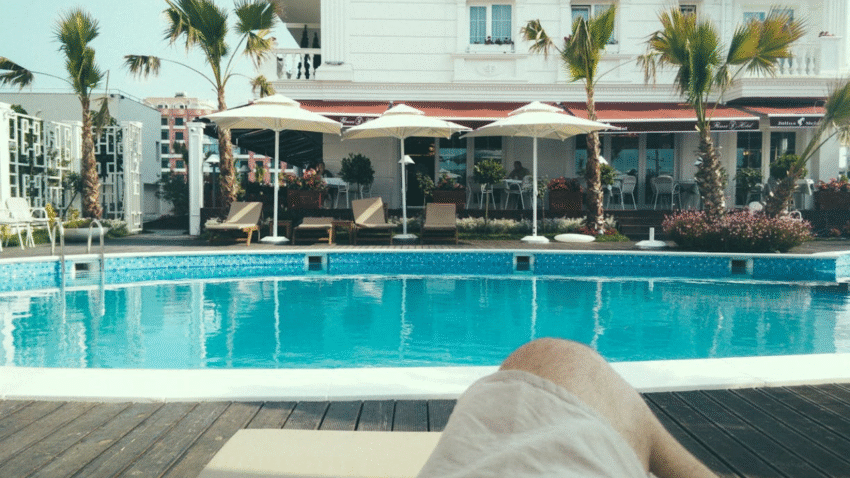Introduction
Just because your pool isn’t in use during the off-season doesn’t mean your equipment can be ignored. If you want your pool to reopen smoothly next season, this guide will show you exactly how to maintain your pool equipment during the off-season. Prevent damage, save money, and extend the life of your gear with these essential steps.
Why Off-Season Pool Equipment Maintenance Matters
When your pool is closed for the season, neglecting your equipment can lead to serious issues. Freezing temperatures, moisture buildup, and debris can damage pumps, filters, and heaters. In the spring, this can mean expensive repairs—or worse, total equipment failure.
Off-season maintenance helps:
- Prevent freezing or corrosion damage
- Keep equipment in ready-to-use condition
- Avoid algae and bacteria growth in stagnant water
- Save time and money when reopening your pool
Step-by-Step Guide to Maintaining Pool Equipment in the Off-Season
Step 1: Turn Off and Disconnect All Equipment
Once you’ve closed your pool:
- Shut off the main power to the pool system to prevent accidental startup.
- Unplug or turn off timers, automation systems, and circuit breakers for pumps, heaters, and chlorinators.
Pool Owner Tip: Label wires and connections if needed to make reassembly easy come spring.
Step 2: Drain All Pool Equipment
Standing water can freeze, expand, and cause cracks or internal damage.
- Drain pool pumps, filters, heaters, and chlorine feeders completely.
- Use the built-in drain plugs or remove the drain caps at the bottom of each unit.
- Tilt pumps slightly to remove any leftover water.
Caution: Make sure all components are fully drained—especially in areas with freezing temperatures.
Step 3: Clean the Pool Filter Thoroughly
Don’t leave a dirty filter sitting for months.
- Remove filter cartridges or grids and rinse with a hose to remove debris.
- Soak in a filter cleaning solution if buildup is heavy.
- Let cartridges dry before storing them in a clean, dry area (indoors if possible).
For sand or DE filters: Backwash before draining and remove any leftover DE powder.
Step 4: Store Equipment Safely
Equipment that can be removed should be stored indoors.
- Store pumps, chlorinators, pressure gauges, and pool vacuums in a dry location like a shed or garage.
- Place in a clean, elevated area to avoid moisture buildup.
Tip: Wrap electrical cords and small parts in labeled plastic bags to keep everything organized.
Step 5: Check and Lubricate O-Rings and Seals
O-rings dry out over winter if left untreated.
- Inspect O-rings on pump lids, filter tanks, and unions.
- Apply silicone-based lubricant to keep them flexible and prevent cracking.
Bonus Hack: Replace any worn or flattened O-rings before storage to save time at reopening.
Step 6: Winterize Pool Heater
Pool heaters need extra attention in cold climates.
- Drain the heater completely and blow out water lines if needed.
- Remove any debris from inside the unit.
- Cover the heater with a vented weatherproof cover (never airtight) to prevent moisture buildup.
Caution: Follow your heater manufacturer’s instructions for proper winterization to avoid voiding warranties.
Step 7: Cover the Pool Equipment Area
If your pump and filter system are installed outdoors:
- Use a vented equipment cover or build a shelter to protect it from snow, ice, and heavy rain.
- Ensure air circulation to prevent condensation, which leads to rust and mold.
Common Mistakes to Avoid
1. Leaving Water in Equipment
Even a small amount of water can freeze and crack components. Always fully drain your equipment.
2. Skipping Filter Cleaning
Dirty filters left untreated can develop mold, bacteria, and foul odors over winter. Clean thoroughly before storage.
3. Storing Items in Damp Spaces
Moisture encourages corrosion and electrical damage. Keep equipment dry and covered indoors if possible.
4. Forgetting to Lubricate O-Rings
O-rings that dry out will crack and leak in spring. A little silicone lubricant goes a long way.
5. Covering Heaters Improperly
Sealing heaters too tightly traps moisture. Use only vented covers designed for pool equipment.
Extra Tips & Pool Hacks
1. Blow Out Plumbing Lines If Needed
In freezing areas, use a shop vac or air blower to remove water from pipes and returns before plugging them with winterizing caps.
2. Use a Pool Equipment Checklist
Create a seasonal maintenance checklist to ensure nothing gets missed—especially if you’re prepping multiple pieces of gear.
3. Schedule a Mid-Winter Checkup
Take a peek at your stored equipment halfway through the off-season to make sure everything is still dry and in good shape.
Bonus Link:
Getting ready to close your pool? [Check out our full guide on how to winterize your pool the right way.]
Conclusion
Proper off-season pool equipment maintenance protects your investment and ensures your pool is ready to go when warm weather returns. With a few simple steps—draining, cleaning, storing, and checking—you’ll avoid the headaches of springtime breakdowns and costly repairs.
Final Tip: Take photos of your equipment setup before disassembly. It’ll make reinstallation in spring fast and frustration-free.
